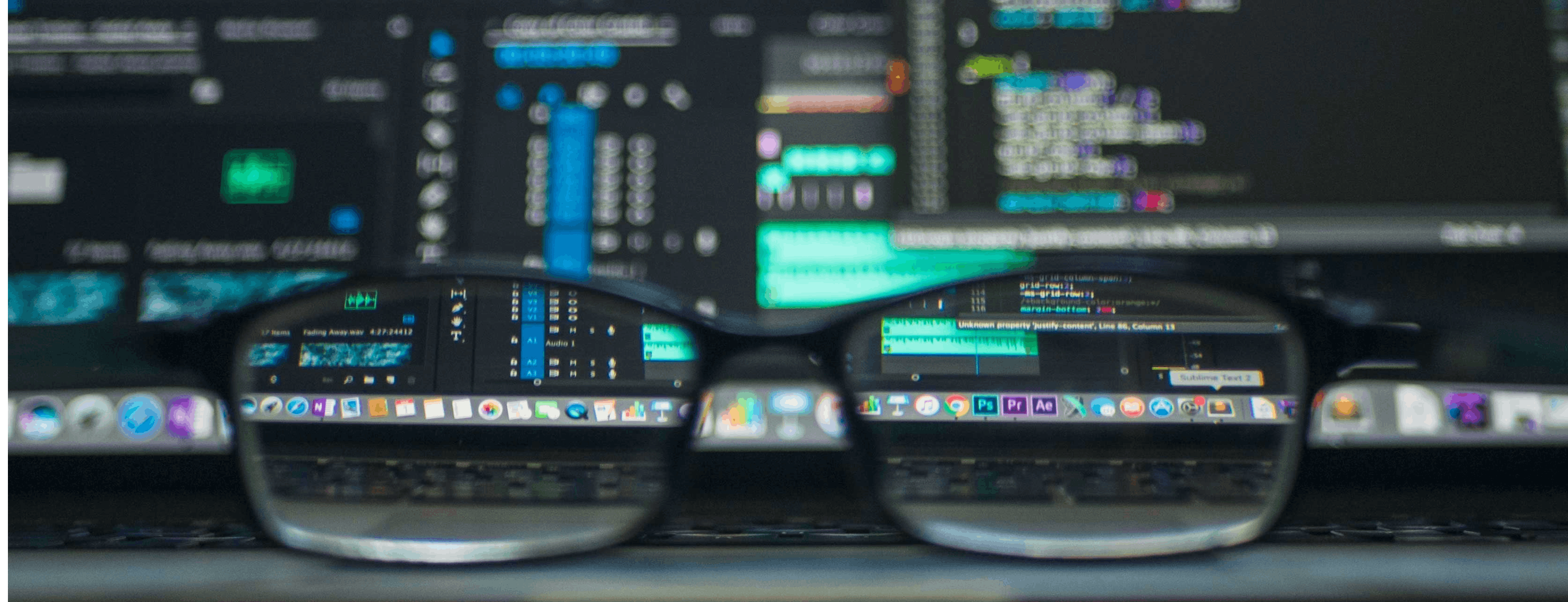
How to Get SOC 2® Compliance and Maintain It: Navigating 9 Key Milestones
Emily Bonnie
Senior Content Marketing Manager
Rob Gutierrez
Senior Cybersecurity and Compliance Manager, CISA, CCSK, CMMC RP
In today’s age of growing cyber threats, earning and keeping customer trust can be difficult. A single data breach can cost millions and devastate a brand’s reputation. In fact, 66% of consumers say they would not trust a company that falls victim to a data breach and 75% would stop purchasing from them in the aftermath of any cybersecurity issue.
In order to trust that a business will protect their sensitive information, prospects, customers, and business partners require proof that organizations have sufficient data protection controls in place. SOC 2 compliance can offer them that assurance.
This article breaks down the entire journey to SOC 2 compliance, starting with how to decide if you should achieve compliance and ending with how to maintain compliance over time.
If you’re new to SOC 2 compliance, check out our overview in the SOC 2 Compliance Hub.
Step 1: Determine if you want to pursue SOC 2® compliance
In order to survive in the marketplace, organizations must be able to demonstrate that they can effectively protect customer data against increasingly sophisticated attacks. Security frameworks like SOC 2 provide guidance around what cybersecurity controls to implement, as well as the opportunity to have a trusted third-party attest to the operating effectiveness of those controls.
While SOC 2 compliance offers multiple benefits, it isn’t mandatory or legally required so implementing this framework is a strategic decision. Here’s some questions you can ask to help make that decision.
1. Do you want to speed up your sales cycle?
SOC 2 compliance can significantly reduce the time it takes to close deals. When potential customers see that your organization has a SOC 2 report, it demonstrates that you’ve already met a rigorous standard of security and data protection. This assurance can eliminate the need for lengthy security reviews and negotiations, allowing your sales team to move more quickly through the sales cycle. The SOC 2 report provides third-party-certified answers to questions any prospect may pose, giving them the confidence they need to make faster purchasing decisions.
Take Formsort, for example. As they moved upmarket, they were wasting a significant amount of time filling out bespoke security questionnaires for each enterprise deal in their pipeline. This was slowing down their sales cycle and requiring precious time from their CTO, so they decided to use Secureframe to get SOC 2 Type II compliant. This eliminated the need for security questionnaires, enabling Formsort to speed up their sales cycle by at least two weeks.
Recommended reading
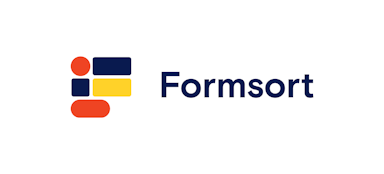
How Formsort Completed the Compliance Process in Record Time and Significantly Sped Up Their Sales Cycle
2. Do you want to increase customer trust?
SOC 2 compliance is a clear signal to your customers that you are committed to protecting their sensitive information. This level of transparency builds trust and fosters long-term relationships.
Customers are increasingly aware of the importance of data security, and by adhering to SOC 2 standards, you demonstrate that you’re taking the necessary steps to safeguard their data. This increased trust can lead to higher customer retention rates and positive word-of-mouth referrals.
Optify, a coaching solutions provider that created an online coaching platform, had prospects of all sizes wanting proof that their data would be secure. As they spent countless hours filling out security questionnaires, Optify knew that one way to build rapid trust in their platform was to obtain SOC 2 compliance. They partnered with Secureframe to simplify the process. Having the SOC 2 report has unlocked many large deals for Optify, including an organization that hadn’t purchased from them a year prior without a SOC 2 report.
Recommended reading
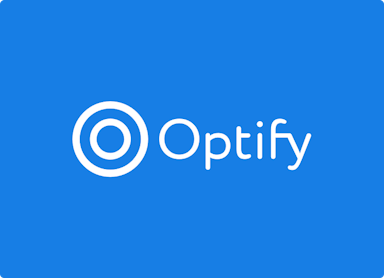
Optify Saved Hundreds of Hours and Gained New Business by Getting Their SOC 2 Report with Secureframe’s Expert Guidance
3. Do you want to improve risk management and other processes?
SOC 2 compliance requires a thorough assessment of your organization’s security controls, policies, and procedures. The process of achieving SOC 2 compliance gives organizations the confidence that they have sound risk management practices in place to identify and address vulnerabilities.
By maintaining SOC 2 compliance, your organization not only meets current security standards but also stays ahead of emerging threats, reducing the likelihood of data breaches, legal liabilities, and reputational damage. In fact, IBM found that data breaches cost nearly $220,000 more when noncompliance was indicated as a factor in the event.
As an early-stage SaaS business looking to close mid-market enterprise customers, Indent needed to build trust and credibility. One of the top customer requests was to obtain a SOC 2 report. By partnering with Secureframe, Indent was able to not only get their SOC 2 report and close several enterprise deals quickly — they were also able to implement security processes that improve efficiency, reduce risk, and ensure Indent’s hard-built reputation remains intact.
Recommended reading

How Indent Rapidly Built Customer Trust With Enterprise Clients Thanks to Secureframe
4. Do you want to gain a competitive advantage?
In a crowded marketplace, SOC 2 compliance sets you apart from competitors who may not have the same level of compliance. Many companies, especially those in regulated industries, prioritize working with vendors that can demonstrate strong security practices.
By achieving SOC 2 compliance, you position your organization as a trusted partner that takes data protection seriously, giving you a distinct edge over competitors who can’t offer the same assurances that their data is adequately protected.
As an estate planning platform, Wealth handles sensitive customer data and often works directly with financial institutions that take data security and privacy seriously. To show prospects and the market that they were committed to security, SOC 2 compliance was a top priority. After working with Secureframe over six months, Wealth became the only digital estate planning platform with SOC 2 Type II compliance, which has been hugely beneficial for sales and marketing.
Recommended reading

How Wealth Built Trust with Customers and Increased Team Productivity with Secureframe’s SOC 2 Compliance Solution
5. Do you store customer data in the cloud?
SOC 2 compliance applies to SaaS companies, service providers, cloud computing companies, hosting services, or data center providers. While SOC 2 is not legally required, every technology-based organization that stores customer data in the cloud should demonstrate SOC 2 compliance.
6. Are your customers based in the US?
If your customers are based in the US, a SOC 2 report is almost essential to attract prospects and close deals. SOC 2 has become the most commonly requested security and compliance standard for procurement and vendor security teams in the US.
Step 2: Decide on the type of SOC 2® report you want
If you’ve decided to pursue SOC 2 compliance, then your next decision should be which type of SOC 2 report you want:
- A Type I report assesses an organization’s cybersecurity controls at a single point in time. It tells companies if the security measures they’ve put in place are sufficient to fulfill the selected TSC. Because they are point-in-time audits, a Type I report can be completed in a matter of weeks and is typically less expensive than a Type II audit.
- A Type II report assesses how an organization’s cybersecurity controls perform over a period of time, typically a 3, 6, 9, or 12-month audit window, to gauge their operating effectiveness. Because of this timeline, Type II audits take longer and are more expensive than a Type I audit.
The decision between report types usually comes down to how quickly an organization needs to have a report in hand. If a SOC 2 report is needed as soon as possible to close an important customer, an organization can obtain a Type I report faster and then prepare for its Type II audit.
If there isn’t as much urgency, many organizations opt to pursue a Type II report. Most customers will request a Type II report, and by bypassing the Type I report, organizations can save money by completing a single audit instead of two.

Recommended reading
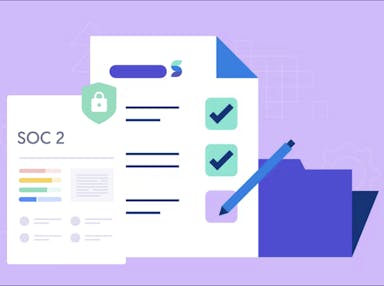
A Deep Dive into SOC 2 Type 1 vs Type 2
Step 3: Plan your SOC 2 compliance timeline and budget
Once you’ve decided which SOC 2 report to pursue, consider mapping out what this process might look like in terms of time and budget to ensure it aligns with your resources, roadmap, and customer expectations.
SOC 2 compliance timeline
Let’s start with how long it takes to get SOC 2® compliant.
The exact timeline depends on a few factors, including the size and complexity of your organization and systems, audit scope, report type, and audit window. But in general:
- The pre-audit phase typically takes between two and nine months to complete and includes the readiness assessment, gap analysis, and remediation.
- The audit itself can take between one and five months, depending on report type and audit scope.
Let’s take a closer look at how these ranges vary depending on SOC 2 report type.

SOC 2 Type I audit timeline: 2-4 months total
Pre-audit preparation: 1-3 months
To prepare for a Type I audit, organizations typically create and implement policies, establish and document procedures, complete a gap analysis and remediation, and complete security awareness training with employees.
Audit: 1 month
The auditor will conduct a point-in-time audit and issue a SOC 2 Type I report.
SOC 2 Type II audit timeline: 1 - 2+ years total
Pre-audit preparation: 1-3 months + audit window
To prepare for a Type II audit, organizations usually select the relevant TSC, conduct a gap analysis and remediation, implement policies and processes, train employees, and complete a readiness assessment.
Once this prep work has been completed, organizations can start the clock on their 3, 6, 9, or 12-month review window. This is the period of time that their controls and processes are running and they are collecting evidence for an auditor to review.
Audit: Month 9-12 months
The auditor will conduct their assessment of the organization’s documentation, interview the team, and issue a SOC 2 Type II report.
Please note that these timelines are based on a manual approach to SOC 2 compliance. Later on, we’ll discuss how getting SOC 2 compliant with Secureframe can accelerate this timeline by saving organizations hundreds of hours of manual work.
Recommended reading
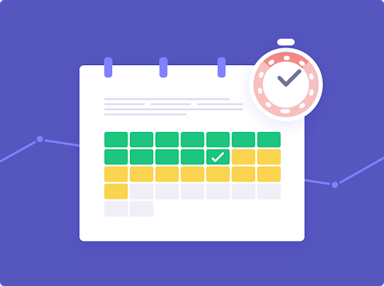
How Long Does a SOC 2 Audit Take?
SOC 2 Compliance Costs
Now let’s go over how much a SOC 2® audit costs.
Just as the compliance timeline can vary, the cost of SOC 2 depends on several factors.
- Whether you are pursuing a Type 1 or Type 2 report
- The number of Trust Services Criteria included in your audit
- The size of your organization and complexity of your systems and controls
- Any outsourced services, like hiring a consultant to complete a readiness assessment and help implement controls
- Hiring the CPA firm to conduct the audit
- Any additional tools and/or employee training needed to remediate gaps

Bottom line: Most companies can expect to spend between $20k-$200k to prepare for and complete a SOC 2 audit without automation. Later, we’ll look at how automation can slash these costs.
Recommended reading
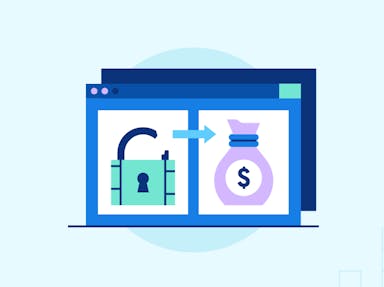
SOC 2 Type I vs SOC 2 Type II Audit Costs
Step 4: Select which SOC 2® Trust Services Criteria (TSC) will be in scope
The American Institute of Certified Public Accountants (AICPA) built the SOC 2 framework around five Trust Services Criteria (formerly known as the Trust Principles):
- Security: Evaluates whether your systems and controls can protect information against physical access, damage, use, or modifications that could hinder users. Security is also known as the “common criteria,” as it’s the only mandatory trust principle. The others are optional.
- Availability: The availability principle checks whether your system and information are readily available for use as committed to via service-level agreements (SLAs). It applies to service organizations that offer cloud computing or data storage services.
- Processing integrity: It examines the accuracy, timeliness, validity, completeness, and authorization of system processing. This also applies to SaaS and technology companies that provide e-commerce or finance-related services.
- Confidentiality: It examines whether your systems and internal controls are capable of protecting confidential data. You should include this principle in your SOC 2 report if you handle confidential information, like insurance or banking data for clients.
- Privacy: Unlike confidentiality, which applies to a wide array of sensitive data, privacy focuses entirely on personal information. It evaluates whether your systems gather, store, show, use, and dispose of personal information in a manner that meets client objectives.
At this stage of the SOC 2 compliance journey, you decide which Trust Services Criteria to include in your audit scope and report. This is a critical step since you implement systems and information security controls based on the Trust Services Criteria relevant to your organization and your customers.

Recommended reading
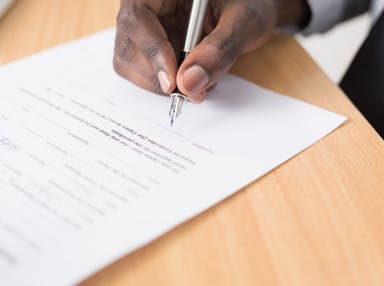
Understanding SOC 2 Compliance Requirements
Step 5: Automate your readiness work
Once you’ve selected your TSC, you’re ready to begin putting the policies, controls, and documentation you need in place to meet SOC 2 requirements. This readiness work requires a significant investment of time, resources, and meticulous attention to detail—especially if you’re taking a manual approach.
SOC 2 compliance software can be a game-changer at this stage. It cuts down the hundreds of hours typically spent on manual tasks during the compliance process, such as interpreting SOC 2 guidance, conducting a gap analysis, gathering evidence, and creating and managing policies. A tool like Secureframe automates the evidence collection process, shows exactly what you need to do to close gaps in your compliance posture, provides pre-built policy templates, and much more.
Automating these tasks will free up your team to focus on higher-priority, revenue-generating activities. But the benefits of compliance automation go beyond time savings. This reduction in manual labor also translates into substantial cost savings, making compliance more accessible and less daunting.
Step 6: Pick a SOC 2® auditor
SOC 2 audits can only be performed by an AICPA-accredited Certified Public Accountant (CPA) firm. The auditing firm must be independent so it can perform an objective examination and deliver an unbiased report.
When selecting an auditor, you’ll want to consider multiple factors such as:
- Depth of industry experience
- Staffing, including what level of personnel perform the actual audits
- Their process for conducting the audit
- Reputation
If you’re ready for a SOC 2 audit and are looking for a trusted auditing firm, you can refer to our list of highly-regarded CPAs.
Recommended reading
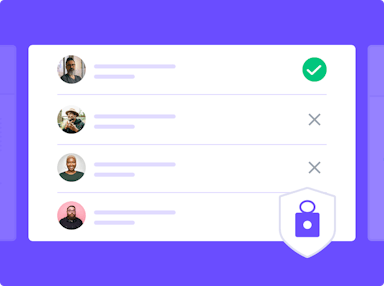
15+ Tips for Choosing an Auditor, According to Secureframe Audit Partners
Step 7: Undergo the SOC 2® audit
Once you've completed your readiness work and selected a licensed CPA firm, your formal SOC 2 audit begins. The auditor will assess whether your controls are designed (Type I) or designed and effectively operating over a period of time (Type II) based on the Trust Services Criteria you’ve selected.
Auditors spend anywhere from a few weeks to a few months reviewing your systems and controls, depending on the scope of your audit and the report type you chose. They’ll run tests, review evidence, and interview members of your team before producing a final report.
During the audit, you can expect some back-and-forth communication. Your auditor may ask clarifying questions about your documentation or request additional evidence or screenshots. This is all part of a normal audit process and, with solid preparation, these interactions are typically straightforward.
If you’re working with Secureframe, the process is even more streamlined. Our audit partners are deeply familiar with the Secureframe platform and can access evidence, controls, and policies directly through the tool, reducing the need for repetitive follow-ups and manual handoffs.
Step 8: Get your SOC 2® report
SOC 2 is an attestation report, not a certification like ISO 27001. You don’t pass or fail a SOC 2 audit. Rather, you get a detailed report with the auditor’s opinion on how your service organization complies with your selected Trust Services Criteria.
There are four possible opinions you can receive:
- An “unqualified opinion” is a pass, and the organization is compliant with SOC 2.
- A “qualified opinion” means the organization is almost compliant, but one or more areas require improvement.
- An “adverse opinion” means the organization falls short of SOC 2 compliance in one or more non-negotiable areas.
- A “disclaimer of opinion” means the auditor doesn’t have enough evidence to support any of the first three options.
In addition to the auditor’s opinion, a full SOC 2 report includes an overview of the audit scope, descriptions of tests and test results, a list of any cybersecurity issues the auditor discovered, and their recommendations for improvements or remediation requirements. It also includes a management assertion, which allows organizations to make claims (or “assertions”) about its own systems and controls.
Recommended reading
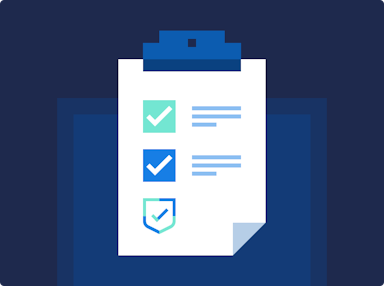
What Does a SOC 2 Report Cover?
Step 9: Maintain SOC 2 compliance with automation
Unlike ISO 27001 certifications, SOC 2 reports don’t have a formal expiration date. That said, most customers will only accept a report that was issued within the last 12 months. For this reason, most companies undergo an audit on an annual basis.
Staying compliant year after year is what builds lasting customer trust and long-term business value. Unfortunately, some organizations treat SOC 2 as a one-time project, only to scramble again when it’s time to renew their report. This is where automation can once again play an essential role.
With an automation tool like Secureframe, ongoing compliance management is not a manual, time-consuming process. This tool can continuously monitor your controls across cloud infrastructure, identity providers, device management systems, and more and alert you to misconfigurations or potential compliance gaps. That means no more waiting until audit time to discover a problem.
Instead, you can get an overview of your current compliance status to see what’s looking good and what you can do to improve at any time via always up-to-date dashboards.
The result is lower stress and lower cost not just for your next report, but for every year that follows.
Free resources to simplify SOC 2® compliance
Check out our library of free resources to help you navigate the SOC 2 compliance process. You’ll find guides, policy templates, evidence collection spreadsheets, compliance checklists, and more.

The SOC 2 Compliance Kit
Simplify SOC 2 compliance with key assets you’ll need to get your report, including a SOC 2 guidebook, customizable policy templates, readiness checklist, and more.
Why choose Secureframe as your SOC 2® compliance software
To highlight the impact of compliance automation, we leveraged data from a 2024 survey of Secureframe users conducted by UserEvidence. The survey data reveals several compelling benefits of compliance automation:
- Reduces manual work: SOC 2 compliance traditionally involves labor-intensive tasks like evidence collection, policy management, and risk assessments. Automation platforms alleviate this burden by automating these processes, allowing your team to focus on strategic initiatives. According to the survey, 97% of Secureframe users reported a reduction in time spent on compliance tasks, with 76% cutting that time by at least half. Additionally, 85% of users reported annual cost savings, demonstrating the tangible financial benefits of automation.
- Spots gaps in your system configurations and internal controls: Identifying and addressing gaps in your security controls is crucial for maintaining SOC 2 compliance. Automation tools like Secureframe provide automated gap analysis, helping you pinpoint areas that need improvement. As you progress through the SOC 2 framework, Secureframe updates your compliance status in real-time, ensuring you're always audit-ready. This proactive approach to gap analysis was a key benefit for 97% of Secureframe users, who reported an improvement in their security and compliance posture.
- Streamlines the audit process for you and your auditor: Automating evidence collection and transfer simplifies the audit process, reducing the back-and-forth between your team and the auditor. Secureframe’s established relationships with auditors further expedite the process, making audits quicker and less stressful. This efficiency was recognized by 95% of Secureframe users, who reported time and resource savings during the compliance process.
- Makes it easier to maintain compliance: Compliance isn’t a one-time event; it requires continuous monitoring and management. Automation platforms provide real-time alerts for potential non-conformities, allowing you to address issues proactively rather than reactively. This capability was highly valued by 75% of Secureframe users, who reported a reduction in the risk of non-compliance, and 71% who saw improved visibility into their security and compliance posture.
- Simplifies compliance across multiple frameworks: Many organizations must comply with multiple frameworks, such as SOC 2 and ISO 27001, which often have overlapping requirements. Compliance automation tools can map controls across different frameworks, reducing redundant work and accelerating the compliance process. Secureframe users experienced significant time savings, with 89% reporting faster time-to-compliance for multiple frameworks, and 53% achieving these improvements by 76% or more.
Secureframe’s SOC 2 automation software, paired with actual compliance experts, will help you at every step of the SOC 2 compliance journey, from understanding control requirements to determining your audit readiness all the way through the audit itself. Request a demo to learn more.
Use trust to accelerate growth
FAQs
What is SOC 2 in a nutshell?
In a nutshell, SOC 2 is a security framework for ensuring service organizations implement effective controls related to the five Trust Services Criteria: security, availability, processing integrity, confidentiality, and privacy. Organizations must undergo a third-party audit by an accredited CPA firm to assess compliance with SOC 2 requirements. By doing so, organizations demonstrate that they are capable of protecting sensitive data and effectively build trust with customers and prospects.
What does SOC 2 compliance mean?
SOC 2 compliance means that a service organization established security controls and processes that satisfy the requirements of the SOC 2 framework. After an organization implements the required security controls and completes a SOC 2 audit with a certified third-party auditing firm, they receive a SOC 2 report that details their level of compliance.
What is required for SOC 2 compliance?
SOC 2 is a flexible framework that allows organizations to implement controls based on their unique systems and business needs. That said, organizations must fulfill requirements of their selected TSC. This typically involves:
- Information security: Data must be protected against unauthorized access and use
- Logical and physical access controls: logical and physical access controls must be in place to prevent unauthorized use
- System operations: System operations must be in place to detect and mitigate process deviations?
- Change management: A controlled change management process must be implemented to prevent unauthorized changes
- Risk mitigation: Organizations must have a defined process for identifying and mitigating risk for business disruptions and vendor services
What are the 5 principles of SOC 2?
The SOC 2 framework is built on 5 Trust Services Criteria, as defined by the American Institute of CPAs (AICPA):
- Security
- Availability
- processing integrity
- Confidentiality
- Privacy
Of these five TSC, only security (also known as the common criteria) is required to be included in the audit report.
What is the difference between ISO 27001 and SOC 2?
SOC 2 and ISO 27001 are similar frameworks that both address security principles like data integrity, availability, and confidentiality. Both frameworks also require an independent audit by a certified third party.
However, there are key differences between the two frameworks. ISO 27001 is more prevalent internationally, while SOC 2 is more prevalent in the US. ISO 27001 also requires organizations to have a plan in place to continually monitor and improve their information security controls over time. SOC 2 is generally more flexible, allowing companies to choose which TSC to include in their audit in addition to the security requirement. ISO 27001, however, involved prescribed controls that organizations need to implement.
Who needs SOC 2 compliance?
Any business that handles customer data in the cloud will benefit from compliance with SOC 2, especially those serving customers in the US. While SOC 2 is not legally mandated, more customers are requiring vendors to have a SOC 2 report before signing a deal. A current SOC 2 report helps organizations build customer trust, establish strong security practices, expand into new markets, and stand out from competitors.
What are the two types of SOC 2?
Organizations can choose to pursue a SOC 2 Type I or SOC 2 Type II report. A Type I report involves a point-in-time audit, which evaluates how your control environment is designed at a specific point in time. A Type II report evaluates how those controls perform over a specific period of time, or audit window, typically 3, 6, or 12 months.
What is a SOC 2 readiness assessment?
A SOC 2 readiness assessment is a pre-audit test that can confirm that your organization is well-prepared for a SOC 2 audit.
The purpose of the review is to pinpoint controls that conform (or don’t conform) to trust service criteria. It also uncovers areas that are lacking proper controls and helps create a remediation plan.
Use our SOC 2 readiness assessment checklist to visualize your level of audit readiness and quickly identify gaps.
What’s the difference between SOC 1® and SOC 2® reports?
SOC 1 and SOC 2 are different types of SOC reports designed to help service organizations meet specific user needs.
- A SOC 1 report addresses the internal controls over financial reporting (ICFR). It focuses entirely on financial reporting objectives and doesn’t deal with the confidentiality, privacy, or availability of customer data.
- A SOC 2 report covers broader operational objectives for service organizations. It focuses on the internal controls aligned with security, privacy, availability, processing integrity, and confidentiality of customer data.
There are two types of SOC 2 audit reports: SOC 2 Type I and SOC 2 Type II. Let’s take a closer look at the difference below.
What’s the SOC 2 audit process like?
Here’s a high-level overview of the SOC 2 audit process:
Phase 1: Define SOC 2 scope
Decide whether to pursue a Type I or Type II report and the Trust Services Criteria you’ll include in your audit based on your contractual, legal, regulatory, or customer obligations. Depending on why you’re seeking SOC 2 compliance, you can include only security or all five TSC.
If you select a Type II report, you’ll also decide on a 3, 6, 9, or 12-month review window.
Phase 2: Perform a gap analysis
Determine your control objectives relative to your TSC, then assess the current state of your control environment and complete a gap analysis against SOC 2 requirements. Create an action plan for remediating any gaps in your controls.
Phase 3: Execute remediation plan and readiness assessment
In this phase, you allocate resources to execute the remediation plan and close the gaps uncovered in the previous phase. After completing a SOC 2 readiness assessment, you can begin the formal audit.
Phase 4: Begin the audit
Now the auditor will begin the attestation process, evaluating and testing your controls against the TSC you’ve selected.
Phase 5: Get your SOC report
SOC 2 auditing can take up to five weeks, depending on audit scope and number of controls. The auditor will deliver the SOC 2 audit report with four standard features:
- Management’s assertion
- Description of services
- Auditor’s opinion
- Results of testing

Emily Bonnie
Senior Content Marketing Manager
Emily Bonnie is a seasoned digital marketing strategist with over ten years of experience creating content that attracts, engages, and converts for leading SaaS companies. At Secureframe, she helps demystify complex governance, risk, and compliance (GRC) topics, turning technical frameworks and regulations into accessible, actionable guidance. Her work aims to empower organizations of all sizes to strengthen their security posture, streamline compliance, and build lasting trust with customers.

Rob Gutierrez
Senior Cybersecurity and Compliance Manager, CISA, CCSK, CMMC RP
Rob Gutierrez is an information security leader with nearly a decade of experience in GRC, IT audit, cybersecurity, FedRAMP, cloud, and supply chain assessments. As a former auditor and security consultant, Rob performed and managed CMMC, FedRAMP, FISMA, and other security and regulatory audits. At Secureframe, he’s helped hundreds of customers achieve compliance with federal and commercial frameworks, including NIST 800-171, NIST 800-53, FedRAMP, CMMC, SOC 2, and ISO 27001.